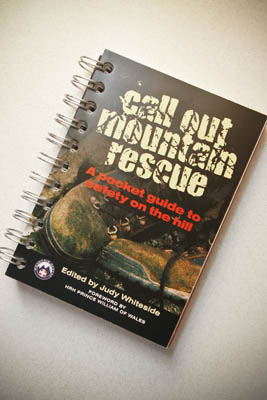 A former Prime Minister once put at the top of his priorities: education, education, education. It’s not a bad idea, especially if your priorities are the tops of Britain’s mountains and fells.
A former Prime Minister once put at the top of his priorities: education, education, education. It’s not a bad idea, especially if your priorities are the tops of Britain’s mountains and fells.
I count myself as reasonably knowledgeable about walking on high ground, but this little book taught me enough to make it a worthwhile addition to my rucksack.
Call Out Mountain Rescue runs through most of the things you need to know to make your trips on to the tops safer. It’s in an easily digestible form, with lots of hints on how to prepare for a trip, what to take, basic navigation and things to avoid when tackling Britain’s mountains.
The aim is to stop the walker becoming a mountain-rescue statistic. Calls to our volunteer rescue teams have risen by 40 per cent in the last five years and Mountain Rescue (England and Wales) decided it was time to try to educate fellwalkers.
However, accidents do happen, and the book has information on how to get help when you need it; what will happen when you call mountain rescue, and a potted history of the mountain rescue movement. Incredibly, there was a time when Government authorities persecuted and indeed prosecuted mountain-rescue pioneer Wilson Hey of the Alpine Club for his insistence on providing pain relief for casualties on the mountains.
The book chronicles the development of the teams from the ramshackle, ad-hoc early helpers who ripped five-bar gates off their hinges to carry stricken climbers from the fells, to the professional, highly trained, yet unpaid volunteers who are available 24 hours a day, 365 days a year, to answer the call to those who find themselves in trouble on the high ground of the British Isles.
For the mountain know-it-all, there are intriguing little hints scattered throughout the book. For instance, would you know what use toothpaste has when planning routes? Or how about the one example of a mountain incident when you definitely should not go for help straight away?
When would an iPod be useful in a rescue situation? And why might you need to provide a chalet when you dialled 999?
Do you know which colours midges prefer? When might spitting help save your life? The answers are all packed into the book.
 Author Judy Whiteside’s writing style is light and easy to read. The format is simple and the book is small enough, at A6 size, to slip into the rucksack as a reference. My advice would be to read and digest its information first, then carry it to refer to should you need it.
Author Judy Whiteside’s writing style is light and easy to read. The format is simple and the book is small enough, at A6 size, to slip into the rucksack as a reference. My advice would be to read and digest its information first, then carry it to refer to should you need it.
If I have one criticism, it’s the title: Call Out Mountain Rescue could just encourage those thoughtless hillwalkers to whip out their mobiles before trying to extricate themselves from their predicament first. It’s a bit misleading, because the aim is to help you avoid calling out mountain rescue.
Previous publications from mountain rescue councils have been more technical manuals aimed at rescuers rather than the public at large. This little book is firmly aimed at the recreational walker who ventures on to the fells and needs to know how to make his or her journey a little safer. Having said that, there are enough insights to benefit even trained fellwalkers such as those holding Mountain Leader or Walking Group Leader awards.
The book represents a good use of a tenner. Recommended.
Bob Smith
Call Out Mountain Rescue. A Pocket Guide to Safety on the Hill edited by Judy Whiteside. Published by Mountain Rescue (England & Wales). Price £9.99 plus post and packing from editor@mountain.rescue.org.uk.
ISBN 978 0 9501765 8 1. Wirobound paperback. 150 pages.